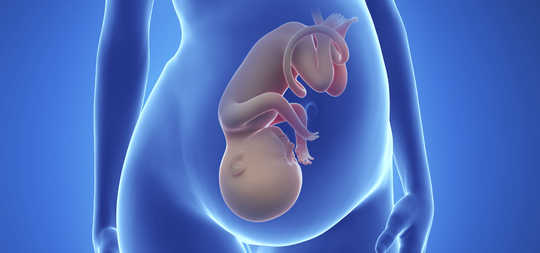
Advanced brain imaging reveals how exposure in the womb to organophosphates changes brain activity in teenagers, a new study shows.
Organophosphates are among the most commonly used classes of pesticides in the United States, despite mounting evidence linking prenatal exposure to the chemicals to poorer cognition and behavior problems in children.
As reported in the Proceedings of the National Academy of Sciences, researchers used functional near-infrared imaging (fNIRS) to monitor blood flow in the brains of 95 teenagers born and raised in California’s Salinas Valley, where agricultural spraying of pesticides is common.
Compared to their peers, teenagers estimated to have higher levels of prenatal exposure to organophosphates showed altered brain activity while performing tasks that require executive control, the study finds.
Get The Latest By Email
“These results are compelling, because they support what we have seen with our neuropsychological testing, which is that organophosphates impact the brain,” says lead author Sharon Sagiv, associate adjunct professor of epidemiology at the University of California, Berkeley.
The teenagers were part of the Center for the Health Assessment of Mothers and Children of Salinas (CHAMACOS), a longitudinal study examining the effects of pesticides and other environmental toxins on childhood development. Investigators initiated the study more than 20 years ago. The study has previously inked prenatal organophosphate exposure with attention problems and lower IQ in children.
For the current study, the researchers used fNIRS to measure brain activation while teens ages 15 to 17 engaged in a variety of tasks requiring executive function, attention, social cognition, and language comprehension.
The fNIRS technique uses infrared light to monitor blood flow in the outer regions, or cortex, of the brain. It provides similar information as functional magnetic resonance imaging (fMRI), but only requires a small cap of infrared light sources, rather than a massive MRI tube, making it a more affordable and portable choice for research studies.
The researchers also used data from the California Pesticide Use Reporting program, which documents when and where agricultural pesticides are sprayed, to estimate their residential proximity to organophosphate application during pregnancy.
They found that teens with higher prenatal organophosphate exposure had less blood flow to the frontal cortex when engaged in tasks that test cognitive flexibility and visual working memory, and that they had more blood flow to the parietal and temporal lobes during tests of linguistic working memory.
“With fNIRS and other neuroimaging, we are seeing more directly the potential impact of organophosphate exposure on the brain, and it may be more sensitive to neurological deficit than cognitive testing,” says senior author Brenda Eskenazi, a professor at UC Berkeley’s Graduate School.
Researchers know little about the relationship between pesticide exposure and the brain, so it’s not clear why organophosphate exposure is associated with lower brain activity for some tasks and higher brain activity for others.
However, researchers have observed similar patterns other conditions affecting the brain, including Type 1 diabetes, Parkinson’s, and Alzheimer’s, says coauthor Allan L. Reiss, professor of psychiatry and behavioral sciences and a professor of radiology at Stanford University.
“The brain has a remarkable ability to utilize compensatory mechanisms to counteract long-term insults,” Reiss says. “Higher activation may represent the recruitment and utilization of extra neural resources to address functional inefficiency related to a long-term insult, and lower activation, then, could be related to the eventual failure to recruit these resources after continued exposure or disease exhausts the brain’s ability to bring compensatory responses online.”
In the future, the team plans to repeat the brain imaging experiments on the more than 500 other participants in the CHAMACOS study to test if the associations hold.
Additional coauthors are from UC Berkeley and Stanford. The National Institutes of Health; the US Environmental Protection Agency; the Stanford Maternal and Child Health Institute; and a gift from the Albert Yu and Mary Bechmann Foundation supported the work.
Source: UC Berkeley
books_health








